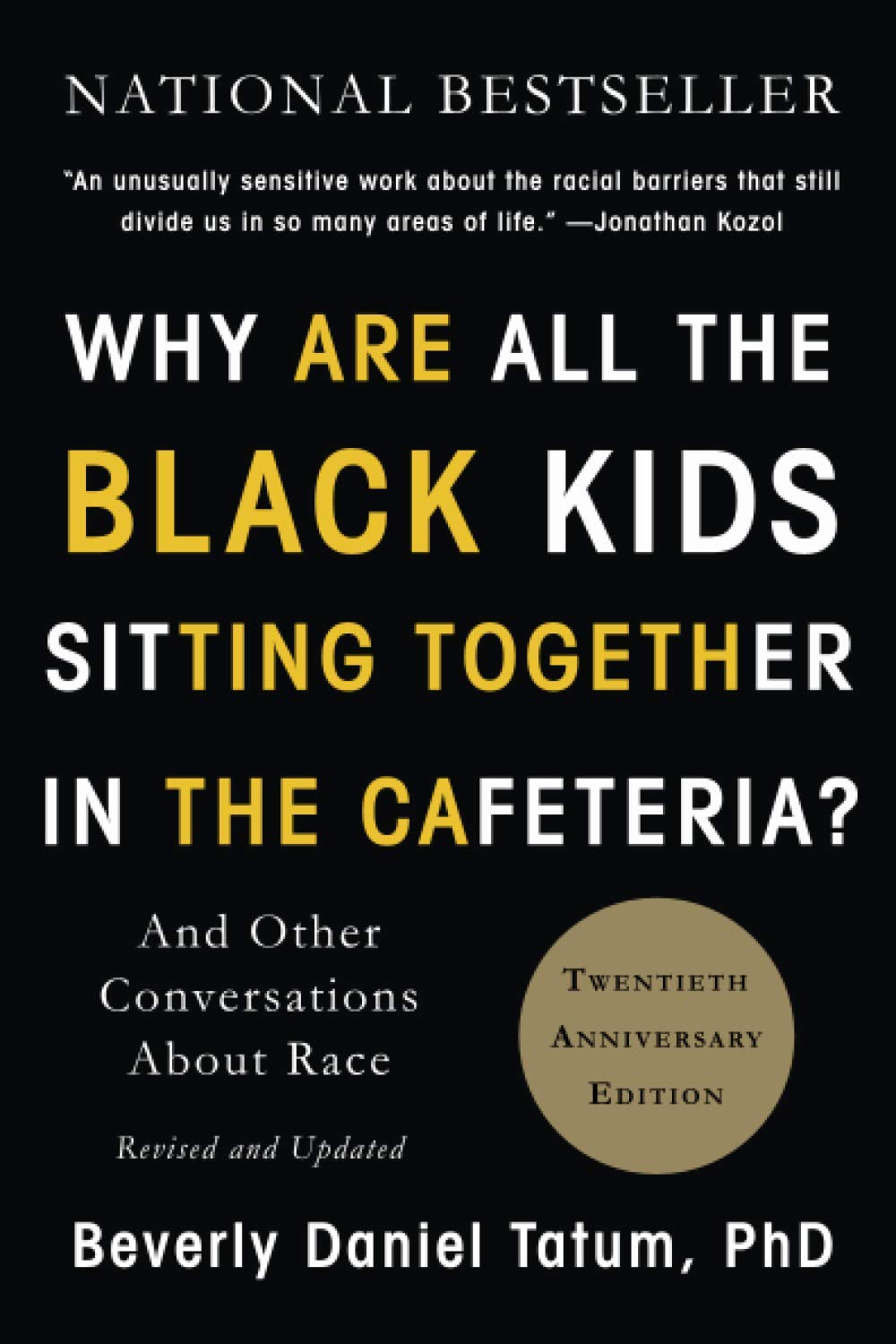
Why Are All the Black Kids Sitting Together in the Cafeteria?: And Other Conversations About Race
Author: Beverly Daniel Tatum, PhD Category: Books for Educators, Diversity and Inclusion, Prejudice and Racism, School Life and Education Publisher: Basic Books Language: English Reading Age: Educators or Parents More DetailsWalk into any racially mixed high school and you will see black youth seated together in the cafeteria. Of course, it’s not just the black kids sitting together–the white, Latino, Asian Pacific, and, in some regions, American Indian youth are clustered in their own groups, too. The same phenomenon can be observed in college dining halls, faculty lounges, and corporate cafeterias. What is going on here? Is this self-segregation a problem we should try to fix, or a coping strategy we should support? How can we get past our reluctance to talk about racial issues to even discuss it?
Beverly Daniel Tatum, a renowned authority on the psychology of racism, asserts that we do not know how to talk about our racial differences: Whites are afraid of using the wrong words and being perceived as “racist” while parents of color are afraid of exposing their children to painful racial realities too soon. Using real-life examples and the latest research, Tatum presents strong evidence that straight talk about our racial identities-whatever they may be-is essential if we are serious about facilitating communication across racial and ethnic divides. This remarkable book, infused with great wisdom and humanity, has already helped hundreds of thousands of readers figure out where to start. These topics have only become more urgent in recent years, as the national conversation about race has become increasingly acrimonious-and sometimes violent.
This fully revised and updated edition is essential reading for anyone seeking to understand-and perhaps someday fix-the problem of segregation in America
Why Are All the Black Kids Sitting Together in the Cafeteria?: And Other Conversations About Race
Written by Beverly Daniel Tatum, PhD
Source: Publisher (Basic Books)
Other Books From - Books for Educators
About the author
Back
 Anti-Blackness at School: Creating Affirming Educational Spaces for African American Students
Anti-Blackness at School: Creating Affirming Educational Spaces for African American Students  “We Dare Say Love”: Supporting Achievement in the Educational Life of Black Boys
“We Dare Say Love”: Supporting Achievement in the Educational Life of Black Boys  Why Race and Culture Matter in Schools: Closing the Achievement Gap in America’s Classrooms
Why Race and Culture Matter in Schools: Closing the Achievement Gap in America’s Classrooms  Finding Your Blind Spots: Eight Guiding Principles for Overcoming Implicit Bias in Teaching
Finding Your Blind Spots: Eight Guiding Principles for Overcoming Implicit Bias in Teaching  The Unapologetic Workbook for Black Mental Health: A Step-by-Step Guide to Build Psychological Fortitude and Reclaim Wellness
The Unapologetic Workbook for Black Mental Health: A Step-by-Step Guide to Build Psychological Fortitude and Reclaim Wellness  The Unapologetic Guide to Black Mental Health: Navigate an Unequal System, Learn Tools for Emotional Wellness, and Get the Help You Deserve
The Unapologetic Guide to Black Mental Health: Navigate an Unequal System, Learn Tools for Emotional Wellness, and Get the Help You Deserve  Reckoning With Racism in Family–School Partnerships: Centering Black Parents’ School Engagement
Reckoning With Racism in Family–School Partnerships: Centering Black Parents’ School Engagement
Recent Comments